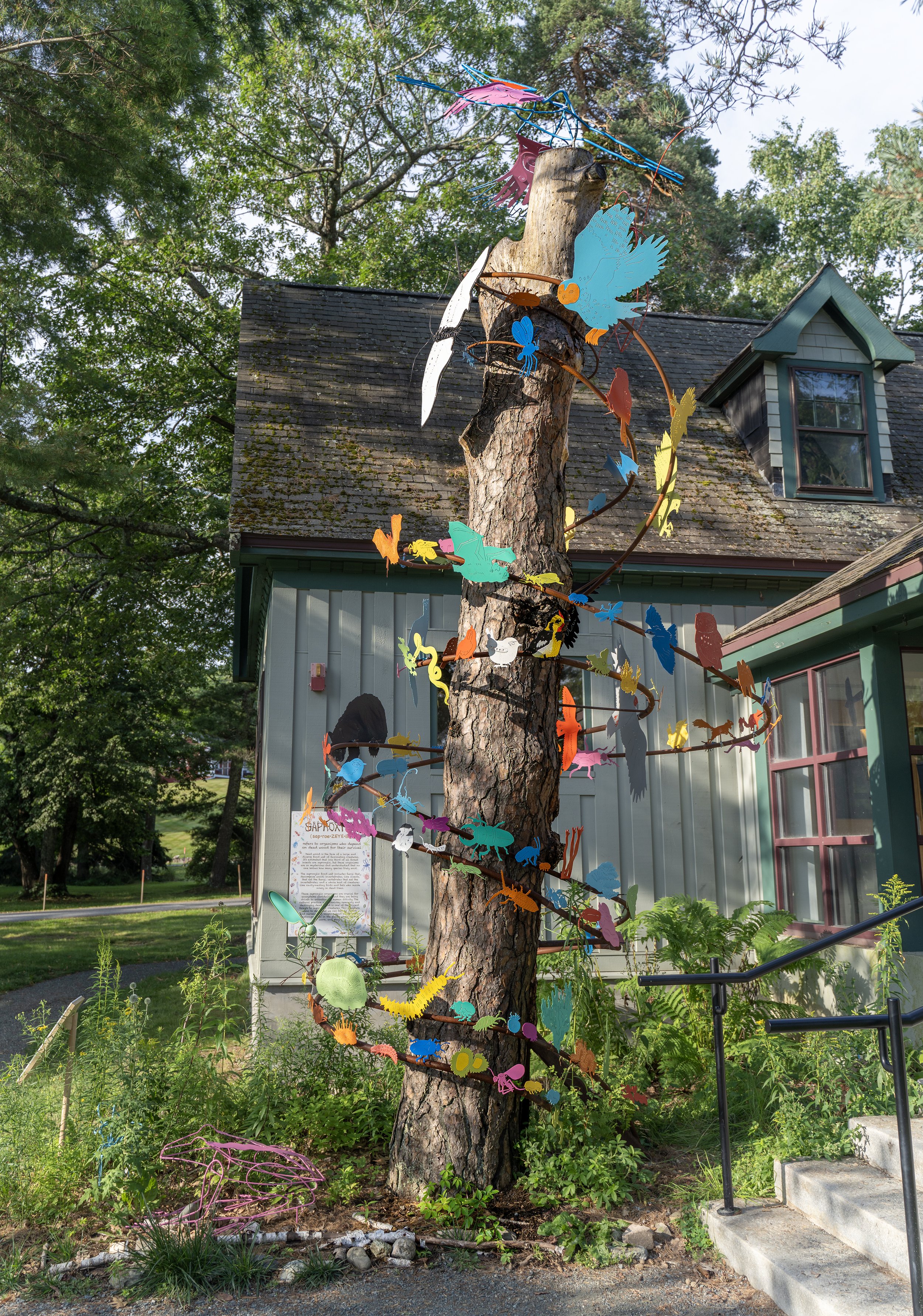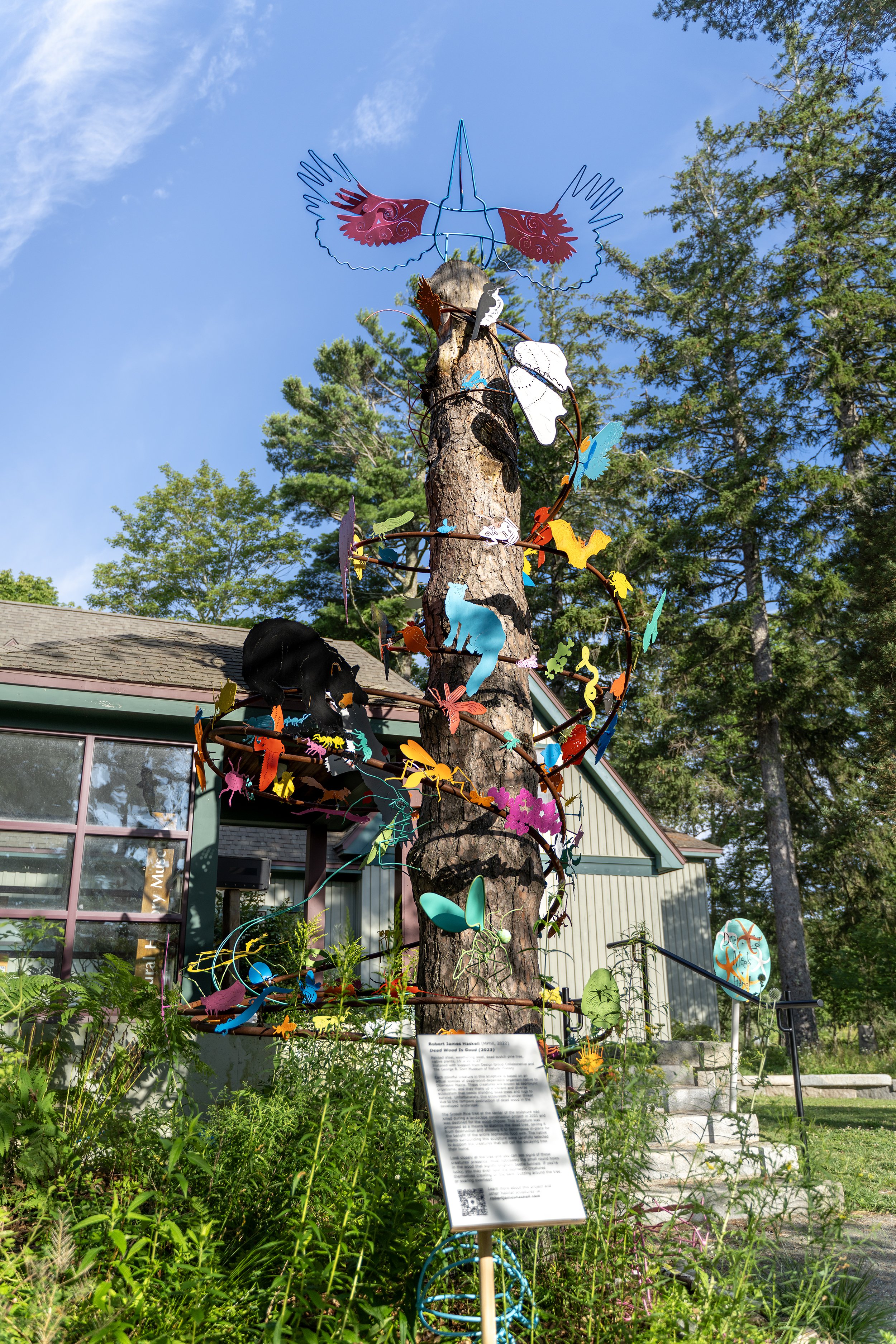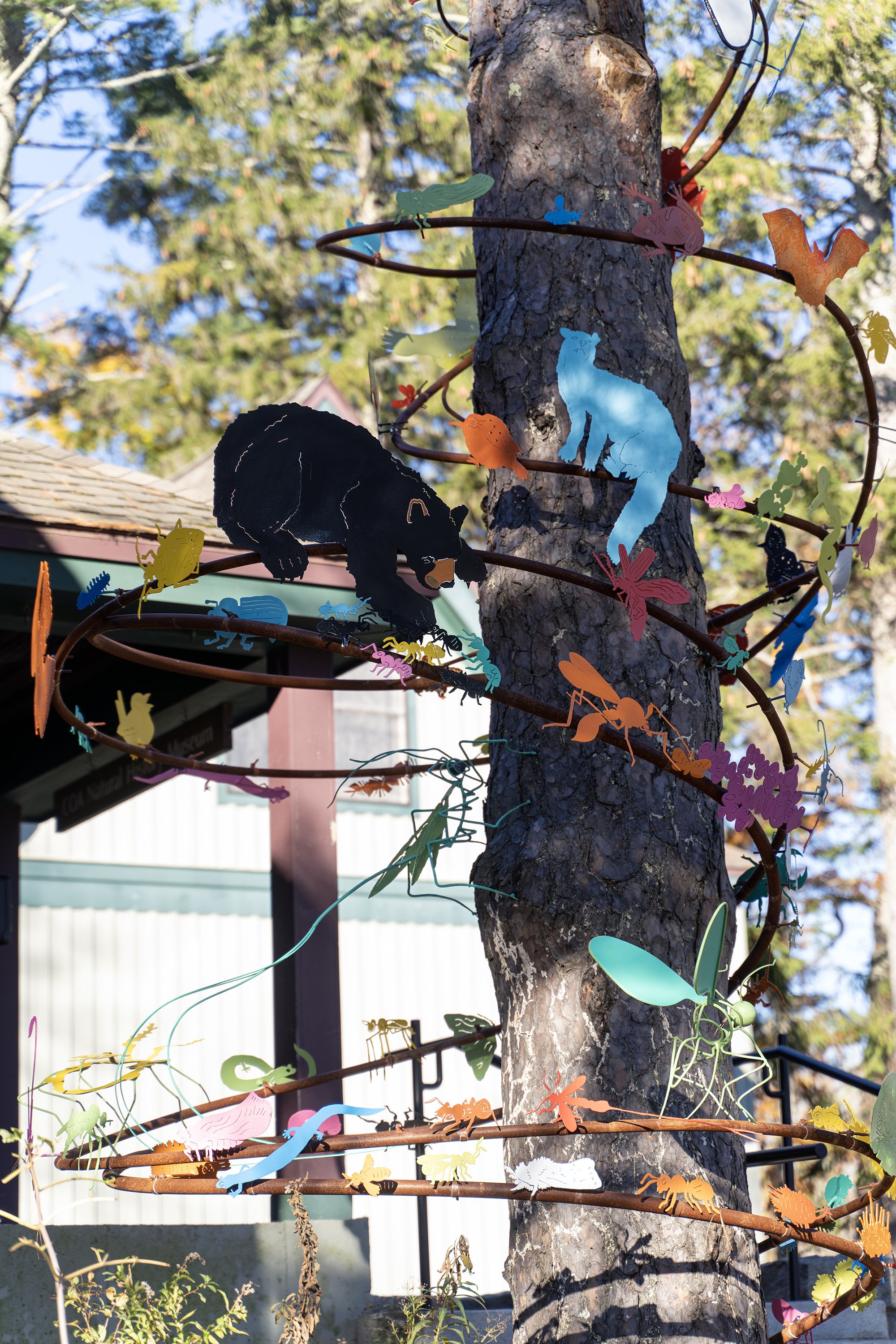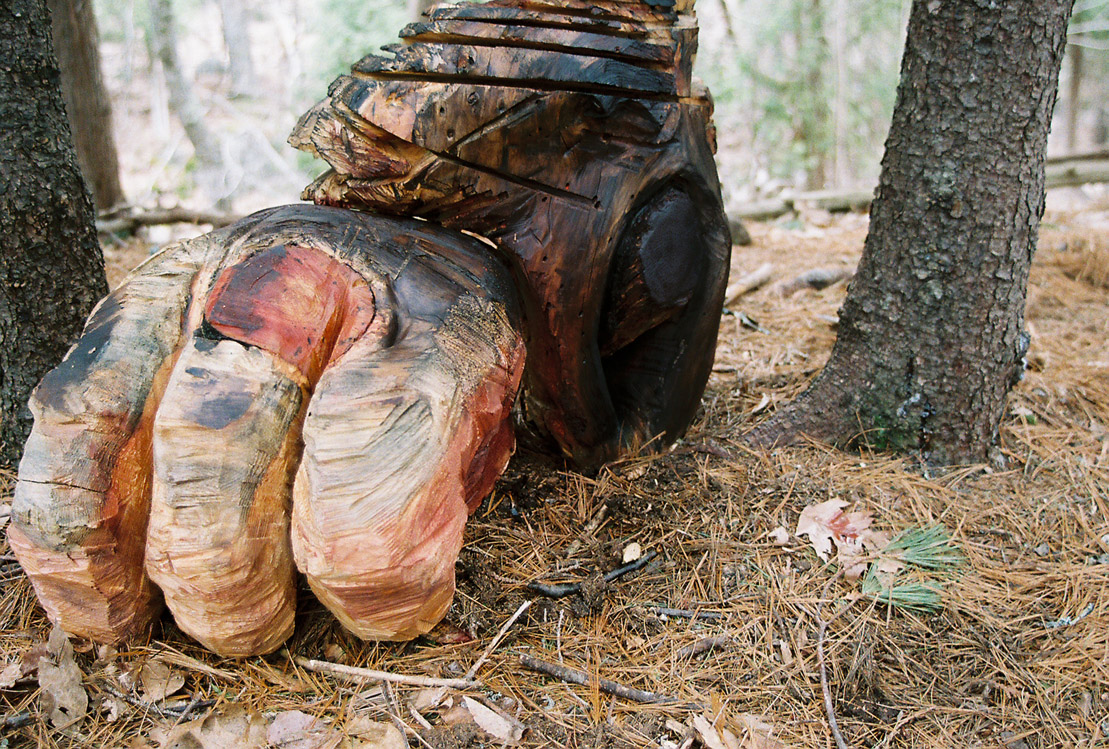projects:
Dead Wood Is Good, 2022
Dead Wood Is Good is a habitat sculpture installation located in front of the Dorr Museum of Natural History on the College of the Atlantic campus in Bar Harbor, Maine.The sculpture itself consists of large steel spirals surrounding a dead scotch pine tree, physically and metaphorically protecting it. Brightly colored steel sculptures are attached to the spirals depicting the saproxylic organisms who will eventually inhabit the tree. There are over 120 organisms depicted, allowing viewers to visually absorb the vast diversity of the saproxylic ecosystem. The artistic interaction of wild organisms being seen next to enlarged, colorful sculptures of themselves is what makes this piece conceptually compelling to me. The sculpture ensures the ongoing existence of this saproxylic community, and I hope that this sculpture can help protect saproxylic creatures everywhere by convincing people that dead wood is good!
This is a collaborative piece!
Thanks to Eli Johnson, Gabriella Bzezinski, Halei Trowbridge, Liv Durham, Mark Francis, Micah Lindberg, Michelle Hanselowski, Minu Toos, Truth Muller, and Westly Reason for their contributions.
DGC Permasculpture Garden, 2015-present
This permasculpture garden is a collaboration with Ellsworth-based architecture firm Design Group Collaborative. The garden sits on the site of a former grass lawn outside the Design Group Collaborative office building. It has been an ongoing project since 2015. The first years were spent improving the soil and making site observations, and it is currently in the stage of cultivating native plants and introducing ecological sculptures.
A permaculture garden is a garden designed around simulating or directly utilizing the patterns and resilient features observed in natural ecosystems. I coined the term “permasculpture” to describe a permaculture garden in which habitat sculptures serve functional roles such as trellises and planters. They can enhance the visual interest of a garden by complimenting or contrasting with the natural forms of plants and animals. And most intriguing to me, they can help the garden to provide habitat in human populated areas.
The Gnome Home (in progress), 2017-present
The Gnome Home is a habitat sculpture installation that houses humans on the inside, and wildlife on the outside. Using natural building techniques and permaculture, The Gnome Home is a sculpture that sustains all life - humans, plants, and animals. It is located on the property of Sweet Pea’s Farm in Bar Harbor, ME.
The project was started in 2017 by myself and Vermont artist Luna Shen. Supporting partners include The Community School in Somesville, Maine, Sweet Pea’s Farm in Bar Harbor, Maine, Design Group Collaborative in Ellsworth, Maine, and Middlebury College in Middlebury, Vermont. Use the Contact page if you would like to find out about volunteer opportunities, or are interested in learning more about the project!
Experiments on Vacant Land, 2012
Philadelphia has 40,000 vacant properties within city limits. Many are owned by the city, and most have no plans for future development. The goal of this project is to take a second look at these neglected spaces, and envision them as spaces with limitless potential. This was a series of guerrilla art installations/performances located in vacant and neglected properties around the city of Philadelphia. These installations were improvised with some basic tools, paints, and materials found on site. On each of the outings I was accompanied by Kat Nania, a Philly based architectural photographer who documented the installations. The project culminated in a public exhibition of photographs and objects hosted by the Hamilton Hall Public Art Initiative in Center City Philadelphia.
Artificial Habitat I, 2011
This piece is installed at the Davistown Museum Sculpture Garden in Bar Harbor, Maine. The sculpture is an anthropomorphic form carved out of a single log. Parts of the wood are meant to rot: providing food and shelter for insects. Deep cuts are made in the wood in a rhythmic pattern. These niches provide shelter for small animals, as well as creating a visual pattern for the human eye. I was inspired by a project from the conceptual artist Mel Chin called ‘Revival Fields’. His concept was to take a piece of land contaminated by industrial pollutants and sculpt away the heavy metal contaminants in the same way a sculptor sculpts away clay or marble. I was moved by the idea that a real world outcome could be considered a work of art, but I wanted to make a piece that was more of a visual and aesthetic object than ‘Revival Fields’. I wanted my training in the visual arts to contribute to the success of the piece. This kind of synergy between art and utility is what I continue to search for in my work.
Interconnections Public Mural, 2010
‘Interconnections’ is a mural on the SMCC campus that contains numerous small scenarios and interactions that are interconnected to make a large collective image.
I made several studies for the mural, mostly using the Buddhist principle of interconnection between nature and all living things. Feeling connected is something that had helped me in the past, so my hope was to have some positive psychological impact on the viewers. This scenes portrayed flux or morphing between humans, animals, nature, all connected and interacting. I wanted to create a surface incredibly dense with visual information that can’t be absorbed at first glance. The mural will be on both a micro and macro scale, so it will instill the message that our individual lives are a part of a much larger universal fabric.

















































